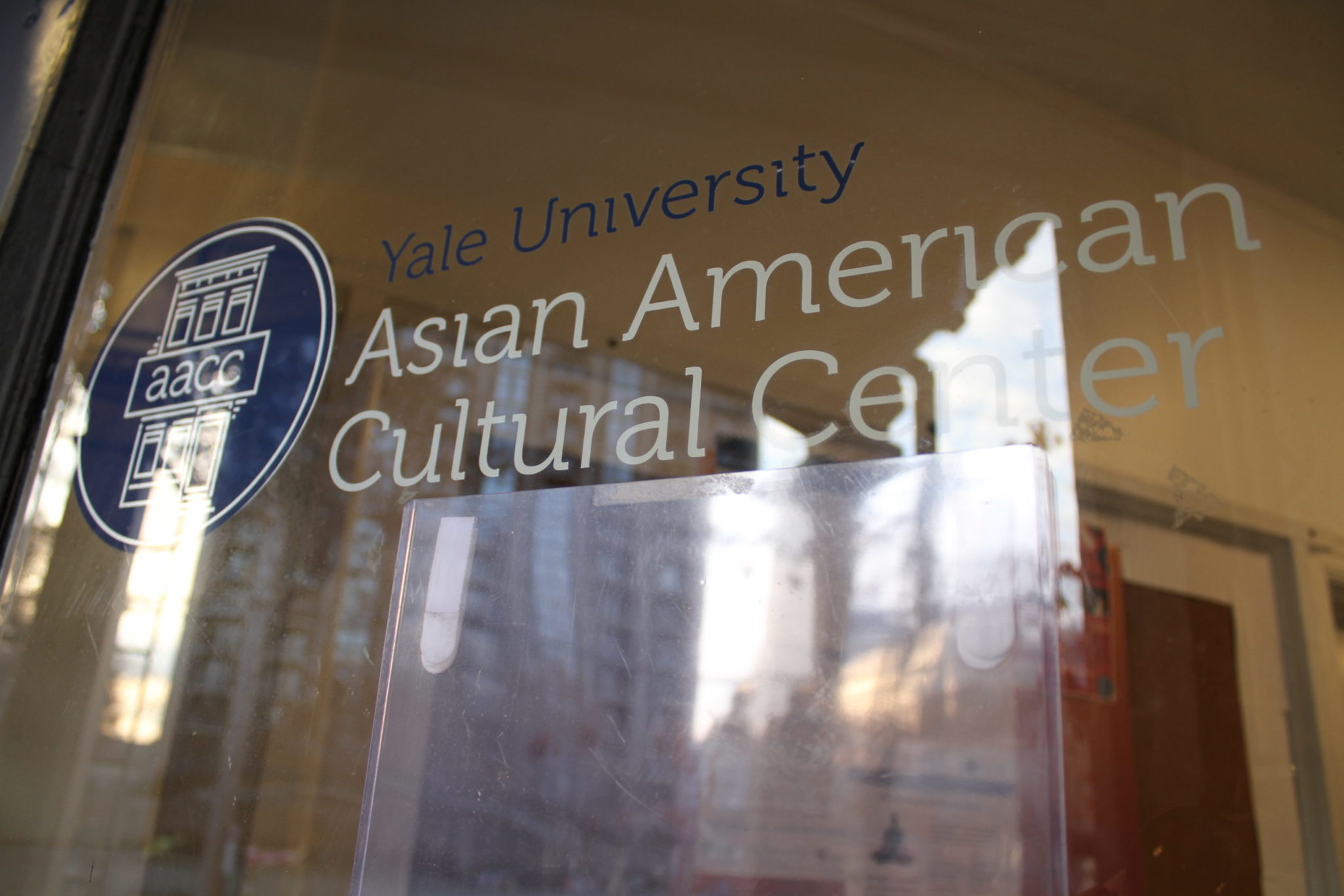
Ruiyan Wang, Contributing Photographer
To close off Pan-Asian American History Month, the Asian American Cultural Center hosted a research day Thursday for students to present their work on AAPI history.
The event featured five Yale students who each gave 15 to 20 minute presentations on research they had conducted related to Asian American and Pacific Islander history. The annual research day first began in 2018, and aimed to showcase the research conducted by the first cohort of Satoda Scholars — a scholarship given by the AACC to students to do further research on Japanese American internment history. In the years since, the event has morphed into an opportunity for any Yale student to present research relating to AAPI history.
“It’s important that the AACC provides our young student scholars with an opportunity to engage with other students’ research in an uplifting and supportive environment as well as to spotlight research that is directly relevant to the lives of Asian and Asian Americans.” Joliana Yee, assistant dean and director of the AACC, wrote to the News.
The presenters included Resty Fufunan ’24, Mariko Rooks ’21 SPH ’22, Kevin Chen YLS ’23, Diza Hendrawan ’25 and Lauren Lee ’23.
Fufunan’s presentation focused on Filipinx identity formations through cultural performances. Specifically, he focused on Battle of the Bamboo, a yearly cultural dance competition between universities in the Midwest. In this competition, in which Fufunan used to take part, each team performs a dance that interprets a legend from Filipino culture. For professor of American studies and history Mary Lui’s class “Asian American History, 1800 to the Present” this fall, Fufunan conducted an oral history project interviewing the former president of one of these dance teams and wrote about how ethnic identity can be formed through the dance competition.
Fufunan said that the central theme of Battle of the Bamboo is taking tales and interpreting them on stage. This allows Filipinos and Filipino Americans to “forge their own path,” writing their “own narrative of what it means to be Filipino American.”
Rooks, who was a Satoda Scholar in 2021, presented on public health and healthcare management strategies in the era of Japanese internment, and how it impacted incarceree health. She spoke on patient and provider relations and shared that because the hospitals were severely understaffed, many had to offer jobs to incarcerees who had no prior medical experience, contributing to the overall low quality of care.
Chen was also a 2021 Satoda Scholar and centered his research on Japanese American citizenship renunciation. As a Yale Law student, he framed his work on the relationship between race, city and the law, focusing on the 1943 Loyalty Questionnaire, which separated “loyal” Japanese Americans eligible for worker relocation on the West Coast and those who would remain in the camps.
His interest in this topic came from classes he took during his undergraduate years at Columbia University relating to transnational migration. Chen credits the Satoda Scholars program for helping fund his research once he moved to Yale.
“The scholarship was a very straightforward and direct way to get resources for this project,” he said. “There is history behind the scholarship and it is cool to join this program that has been fleshed out with a lot of structure.”
Rooks’ and Chen’s presentations are in line with one of the main purposes of the research day — to “ensure research related to the mass forced removal and incarceration of Japanese Americans during World War II and/or Incarceration Studies more broadly conducted by the AACC Satoda Scholars is shared with the broader Yale community,” Yee wrote.
Hendrawan’s presentation centered around exploring themes of Japanese motherhood through Djwara Baroe, a lifestyle magazine published by the Japanese state during the Dutch East Indies occupation. Hendrawan’s interest in the topic relates to her cultural identity, she said during her presentation, as she grew up in Hawaii and her childhood was defined by being in that community.
To conduct her research, Hendarawan went through five volumes of the magazine available in the Sterling Memorial Library and took note of everything relating to motherhood, even providing her own translations.
Hendrawan’s research led to a general conclusion that the magazine depicted Japanese motherhood as “inherent, not achievable.”
“It is something that just had to be aspired to,” she explained in her presentation.
Lastly, Lee presented on how imperialism and capitalism have affected how material is visually represented, specifically focusing on cochineal, a natural red dye. Her research combines her interest in both art and ethnicity, race and migration studies.
Lee said that she became interested in these topics because “there were a lot of classes between art history and ethnicity, race and migration, learning about the Atlantic trade and what that meant for empires and imperialism.”
One of these classes was Gary Okihiro’s “Fruits of Empire” class, where they discussed indigo dye, inspiring Lee to research this topic.
The event also recognized the two 2022 Satoda Scholars, Erin Nishi ’25 and Angelin Mathew ’25.







